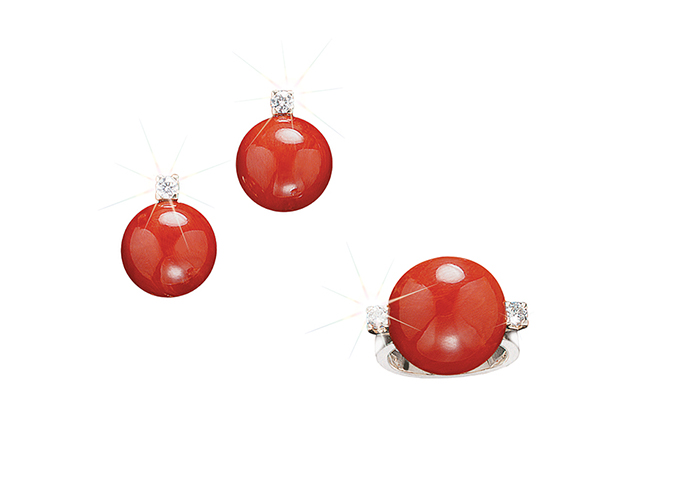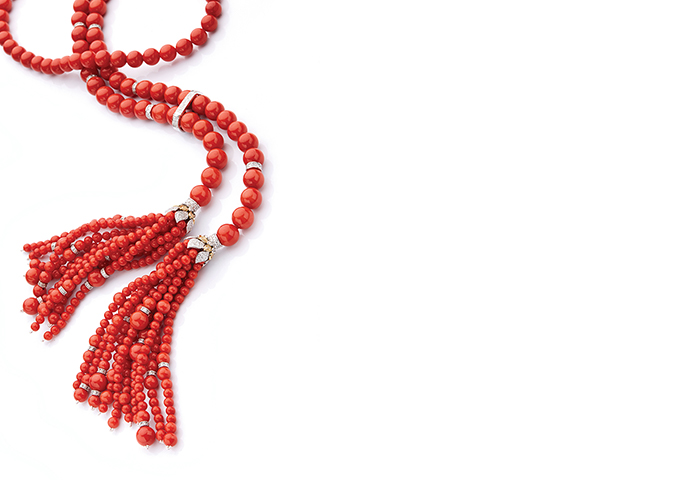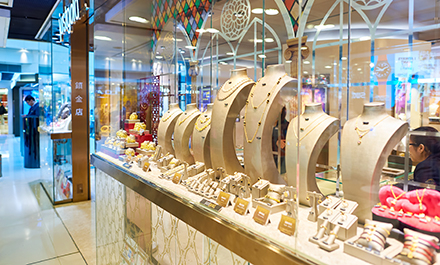The Italian town of Torre del Greco has always been synonymous with rare and alluring corals. JNA revisited its history and jewellery making legacy.
Around 30 minutes from the colourful city of Naples, at the foot of Mount Vesuvius, lay the ancient town of Torre del Greco.
The town’s thriving coral industry, which began in 1500 as a coral harvesting and trading business, changed dramatically when a Frenchman from Marseille came to Torre del Greco in 1805 to purchase coral, and eventually opened a coral store and a factory. He was allowed to operate his business tax-free for 10 years on the condition that he train local people in the arts of processing and carving corals.
His arrival signalled the start of professional coral carving, which gave birth to the exceptional coral craftsmanship that Torre del Greco is known for today.
In 1886, a school dedicated to educating and training young talents in the coral business was established. Within the school is a coral museum that was set up in 1933. From then until today, Torre del Greco has built a solid reputation in the coral and coral jewellery industry.
Modern times
Specialising in carving various types of corals, Torre del Greco today has over 300 coral businesses, employing more than 2,500 people. Total turnover is pegged around US$225 million.
Buyers have an almost magical affinity to coral while coral jewellery attracts attention due to the market’s rising interest in traditional craftsmanship. The coral’s enchanting colour is its most alluring trait.
The Mediterranean coral, Corallium rubrum, gets its stunning blood-red colour from natural pigments known as carotenoids.
The colour however has a more mystical origin, according to Greek mythology. In ancient times, it was believed that the vibrant red in corals was from the blood that dripped from Medusa’s severed head.
According to Gioia de Simone of coral specialist Antonino de Simone, the passion for corals from markets such as Asia, Africa and the US has a cultural background. At the same time, corals are also viewed as sophisticated and fashionable high jewellery items, especially after Living Coral was chosen as the Pantone Color of the Year.
"Pantone"s decision to name Living Coral as color of the year has inspired us to launch a new line of jewellery, which highlights the summery shades of coral,” he noted.
The company was founded in 1830, a few years after the first coral manufacturing and engraving facility was established in Torre del Greco. The business has been in the family for six generations.
Its factory now has 25 expert craftsmen working on semi-finished products, which are exported globally and sought after by high-end jewellers.
It also has a showroom where it exhibits a collection of over 300 pieces of coral jewellery and antique coins with corals. “We also have a cultural mission: To spread knowledge about corals. We bring together all kinds of people, from designers to fashion experts, academics and young talents to educate them about corals,” said Gioia.
Fiammetta de Simone of De Simone Fratelli, meanwhile, cited the immense rarity of corals since these are natural resources.
“They are very difficult to harvest. Our task is to select the most precious corals with utmost care to deliver the best products to our clients,” noted Fiammetta. De Simone Fratelli was put up in 1855.
Commenting on sustainability issues surrounding the coral industry, Gioia said: “The coral used in jewellery making is different from tropical coral reefs. Many regulations and international rules apply to the harvest of precious coral and sustainability is high on the agenda.”
She also said the coral business is affected by a more difficult global economic situation as well as a struggling local economy. In addition to these, the industry faces the challenge of educating the market about corals and reassuring buyers of sustainability in the industry.
















